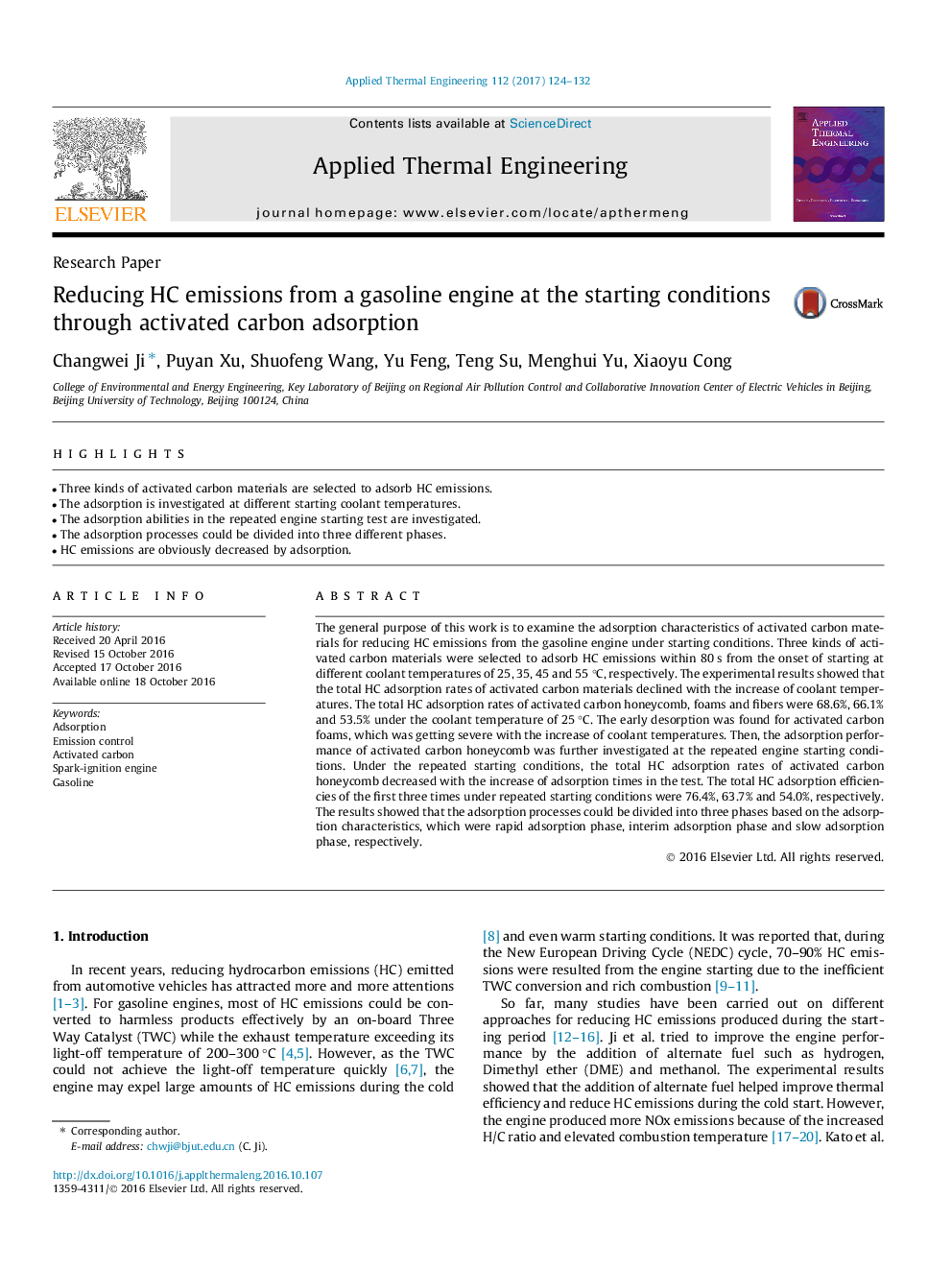| کد مقاله | کد نشریه | سال انتشار | مقاله انگلیسی | نسخه تمام متن |
|---|---|---|---|---|
| 4991689 | 1457117 | 2017 | 9 صفحه PDF | دانلود رایگان |

- Three kinds of activated carbon materials are selected to adsorb HC emissions.
- The adsorption is investigated at different starting coolant temperatures.
- The adsorption abilities in the repeated engine starting test are investigated.
- The adsorption processes could be divided into three different phases.
- HC emissions are obviously decreased by adsorption.
The general purpose of this work is to examine the adsorption characteristics of activated carbon materials for reducing HC emissions from the gasoline engine under starting conditions. Three kinds of activated carbon materials were selected to adsorb HC emissions within 80 s from the onset of starting at different coolant temperatures of 25, 35, 45 and 55 °C, respectively. The experimental results showed that the total HC adsorption rates of activated carbon materials declined with the increase of coolant temperatures. The total HC adsorption rates of activated carbon honeycomb, foams and fibers were 68.6%, 66.1% and 53.5% under the coolant temperature of 25 °C. The early desorption was found for activated carbon foams, which was getting severe with the increase of coolant temperatures. Then, the adsorption performance of activated carbon honeycomb was further investigated at the repeated engine starting conditions. Under the repeated starting conditions, the total HC adsorption rates of activated carbon honeycomb decreased with the increase of adsorption times in the test. The total HC adsorption efficiencies of the first three times under repeated starting conditions were 76.4%, 63.7% and 54.0%, respectively. The results showed that the adsorption processes could be divided into three phases based on the adsorption characteristics, which were rapid adsorption phase, interim adsorption phase and slow adsorption phase, respectively.
Journal: Applied Thermal Engineering - Volume 112, 5 February 2017, Pages 124-132